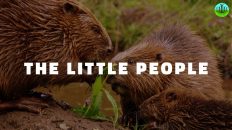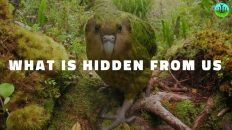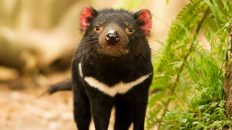Imagine you’re walking through a forest. I’m guessing you’re thinking of a collection of trees but a forest is much more than what you see. Underground there is this other world, a world of infinite biological pathways that connect trees and allow them to communicate and allow the forest to behave as though it’s a single organism.
Mycorrhiza literally means “fungus root.” They’re the mushrooms. The mushrooms are fungal threads that form a mycelium and where the fungal cells interact with the root cells, there’s a trade of carbon for nutrients. The web is so dense that there can be hundreds of kilometers of mycelium under a single footstep. That mycelium connects different individuals in the forest, individuals not only of the same species but between species.
We have found that mother trees nurture their young. A mother tree can be connected to hundreds of other trees. We have found that mother trees will send their excess carbon through the mycorrhizal network to the understory seedlings. They even reduce their own root competition to make elbow room for their kids. When mother trees are injured or dying, they also send messages of wisdom on to the next generation of seedlings. We’ve used isotope tracing to trace carbon moving from an injured mother tree down her trunk into the mycorrhizal network and into her neighboring seedlings, not only carbon but also defense signals. Through back and forth conversations, they increase the resilience of the whole community. That’s because there are many hub trees and many overlapping networks. So trees talk.
But they’re also vulnerable, vulnerable not only to natural disturbances like bark beetles that preferentially attack big old trees but high-grade logging and clear-cut logging. You see, you can take out one or two hub trees, but there comes a tipping point, because hub trees are not unlike rivets in an airplane. You can take out one or two and the plane still flies, but you take out one too many, or maybe that one holding on the wings,and the whole system collapses. Massive disturbance at this scale is known to affect hydrological cycles, degrade wildlife habitat, and emit greenhouse gases back into the atmosphere, which creates more disturbance and more tree diebacks.
We need to save our old-growth forests. These are the repositories of genes and mother trees and mycorrhizal networks. We need to reestablish local involvement in our own forests. When we do cut, we need to save the mother trees and networks so they can pass their wisdom onto the next generation of trees so they can withstand the future stresses coming down the road. We need to regenerate our forests with a diversity of species and genotypes and structures by planting and allowing natural regeneration. We have to give Mother Nature the tools she needs to use her intelligence to self-heal. And we need to remember that forests aren’t competing with each other, they’re supercooperators.
















